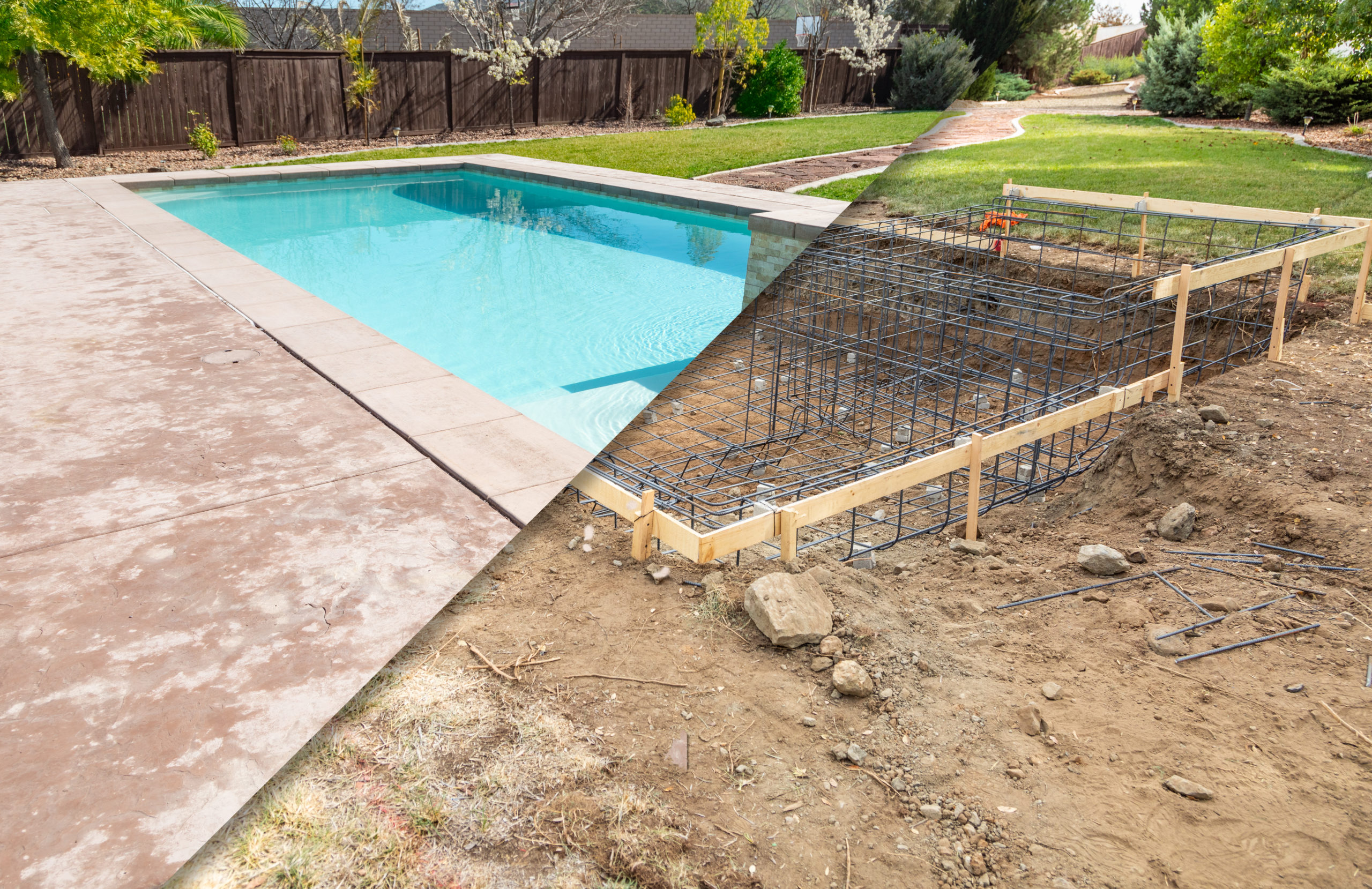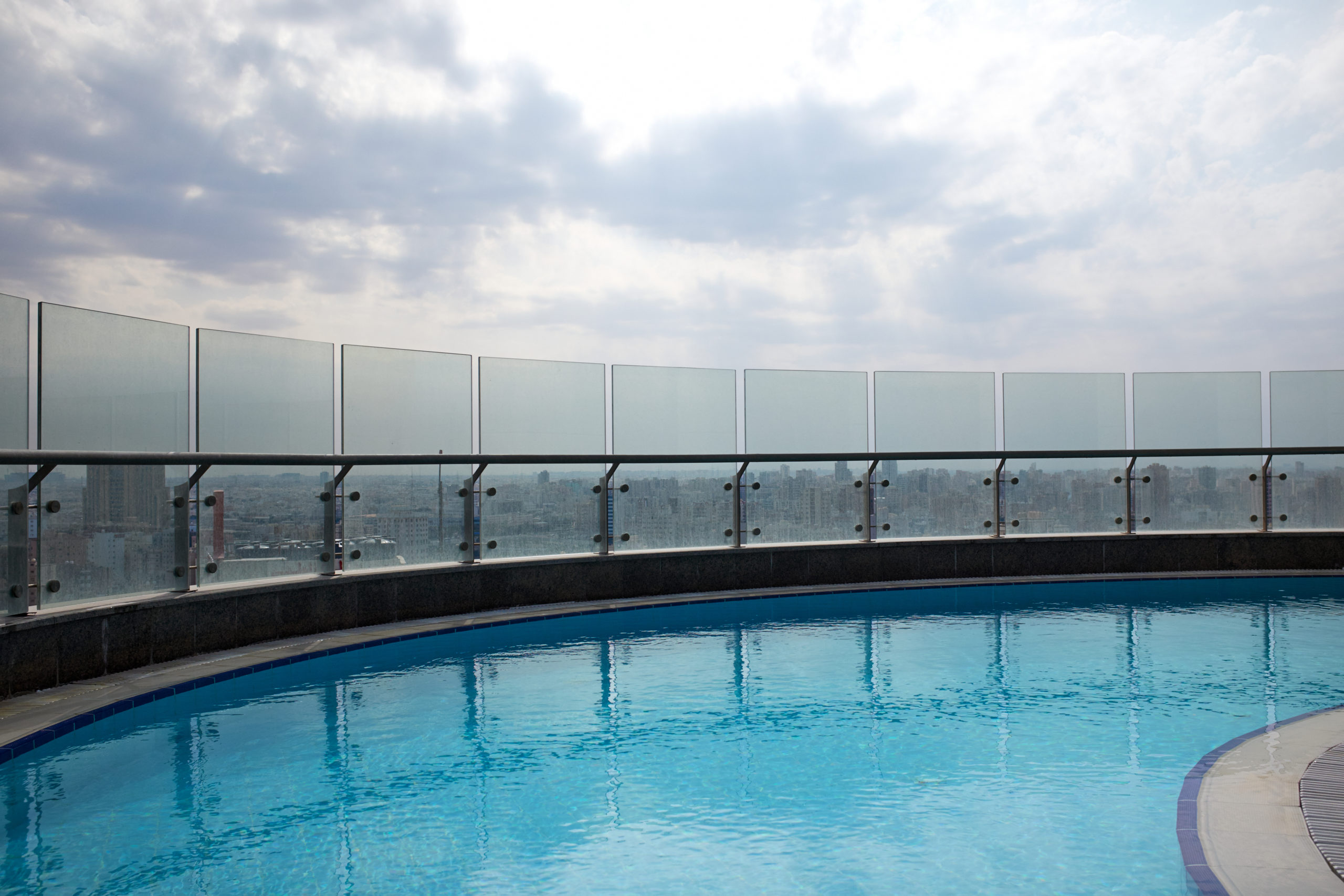You’re ready to build a pool, but have you considered the role of reinforcement? It’s not just about digging a hole and filling it with water. Proper reinforcement ensures your pool’s longevity and safety.
In this article, you’ll delve into the different types of reinforcements used in pool construction and learn why they’re crucial for your project.
So grab your hard hat, we’re diving deep into the intricacies of reinforced pools!
Understanding the Basics of Pool Reinforcement
You’ll need to understand the basics of pool reinforcement if you’re planning on building one yourself. Reinforcement materials are critical in ensuring pool durability, so your choices here will have a significant impact.
Deciding on reinforcement materials isn’t a task to take lightly. Steel rebar is traditionally used due to its superior strength and flexibility, allowing it to withstand the forces exerted by water and ground movement. It’s typically arranged in a grid pattern, placed within the framework before concrete is poured.
However, alternative reinforcement materials such as fiber-reinforced polymer (FRP) bars are gaining popularity for their corrosion resistance and relative ease of installation. Despite being lightweight, they offer comparable strength to steel rebar.
Pool durability also hinges heavily on the quality of your workmanship during installation. The positioning of the reinforcing bars needs precision; too close to the surface and they may cause concrete spalling over time, while placing them too deep reduces their effectiveness at supporting stress points.
Importance of Reinforcement in Pool Construction
It’s vital to ensure the strength and longevity of your swimming area with appropriate structural support. The use of reinforcement materials in pool construction is not merely an option; it’s a necessity. These materials, often steel rods or mesh, are woven into the structure, increasing pool durability significantly.
Your selection of reinforcement materials directly impacts the robustness of your pool. Steel rebar, for instance, offers superior tensile strength but requires careful placement to prevent unwanted cracking or corrosion over time. Fiberglass mesh may be more resistant to rusting; however, it doesn’t provide comparable concrete bonding as its steel counterpart.

You must also consider the strategic placement and spacing of these materials within your concrete shell-too sparse and you compromise on stability; too dense could lead to unnecessary expenditure without proportional increase in durability.
Therefore, understanding the properties and effective utilization of reinforcement materials can be pivotal in ensuring a reliable swimming space that stands up against both time and pressure. As you master this understanding, you’ll find yourself better equipped to make informed decisions that enhance your pool’s lifespan while maintaining aesthetic appeal.
Different Types of Reinforcement Methods in Pool Building
When building a swimming area, there are various methods you can use for structural support, each with its own set of advantages and drawbacks. Your choice of reinforcement materials significantly impacts the pool’s durability.
Here are two distinctive types of reinforcement methods:
* Steel Reinforcement
* Steel Bars: They provide exceptional tensile strength, enhancing pool durability. However, they’re susceptible to corrosion if not properly treated.
* Wire Mesh: This method offers excellent flexibility and is relatively cheaper than steel bars. But it may lack in providing enough rigidity for larger pools.
* Fiber Reinforcement
* Glass Fiber: It provides good tensile strength and resistance to corrosion but lacks compressive strength.
* Synthetic Fibers: These fibers improve the overall resistance to cracking but aren’t as strong as steel or glass fiber reinforcements.
You’ve got to weigh your options carefully, taking into consideration factors like cost, longevity, local climate conditions, and pool size before deciding on the most suitable reinforcement method.
Remember that proper implementation of these techniques can significantly enhance your pool’s lifetime value while compromising on quality could lead to timely repairs and additional costs down the line.
Step-by-Step Process of Reinforcing a Pool
Let’s delve into the step-by-step process involved in bolstering a swimming area, ensuring its structural integrity and longevity.
Your first task is to select the appropriate reinforcement materials. This choice largely depends on your pool type and personal preferences; steel rebar or fiber mesh are commonly used.
Begin by excavating your pool site, laying down a base layer of gravel for drainage. Now you’re ready to introduce your reinforcement materials. If you’re using steel rebar, arrange it in a grid pattern across the entire surface area of the pool shell before pouring concrete over top.
Once the concrete sets, apply a waterproofing layer to prevent water seepage and subsequent damage. You can opt for either liquid or sheet-based membrane – both provide effective moisture barriers that contribute significantly towards pool durability.
Finally, you’ll need to install coping around the edge of your pool for additional fortification and aesthetic appeal. This also serves as an essential safety feature preventing slips and falls.
Remember: reinforcement isn’t merely about achieving strength but also preserving function over time. By carefully selecting reinforcement materials and diligently following these steps, you’ll ensure optimal durability for your swimming haven.

Challenges and Solutions in Pool Reinforcement
You might face a few hurdles during the fortification process, but don’t worry, there are solutions to overcome these challenges.
One major challenge is Reinforcement Material Selection. It’s crucial because the strength and longevity of your pool depend on it.
– Steel bars
– Pros: Strong, durable
– Cons: Prone to rust if not well maintained
– Fiberglass
– Pros: Corrosion-resistant, lightweight
– Cons: Not as strong as steel
The second hurdle comes in Pool Reinforcement Maintenance. Here’s what you need to focus on:
– Regular inspection for damage or corrosion
– If unnoticed or ignored, small damages can escalate into costly repairs.
– Proper waterproofing techniques
– Failure here can lead to water seeping into reinforcement materials causing them to weaken.
Frequently Asked Questions
What Is the Average Cost of Reinforcing a Swimming Pool?
You’re looking at an average cost, which largely depends on the reinforcement materials used and pool size. But for longevity, it’s a worthy investment. Always remember, quality reinforcement ensures your pool’s durability and lifespan.
How Much Time Does It Typically Take to Reinforce a Swimming Pool?
Reinforcing a pool typically takes about 1-2 weeks. It depends on the reinforcement materials and techniques you’re using. Proper planning and execution can help streamline the process, so you’re not wasting time or resources.
Can Pool Reinforcement Be a DIY Project or Does It Require Professional Help?
While you could attempt pool reinforcement as a DIY project, it’s not advisable. The risks are high and the proper handling of reinforcement materials requires specialized knowledge. It’s best to hire professionals for this task.
Are There Any Specific Permits or Regulations Related to Pool Reinforcement?
Yes, specific permits and regulations apply to pool reinforcement. These laws ensure the correct use of reinforcement materials and compliance with safety standards. You’ll need to check with your local building department for details.
Is There Any Maintenance Required Post the Reinforcement Process in Pools?
Yes, post-reinforcement maintenance is necessary. You’ll need to regularly check the reinforcement material choices for damage or corrosion. Weather impact on reinforcements is also crucial to monitor for maintaining a safe and sturdy pool structure.
